Boy, it sure is a long way down.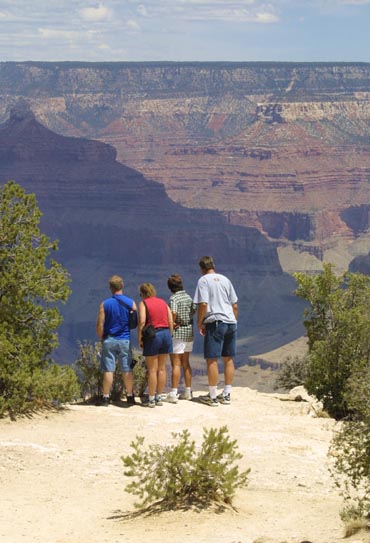
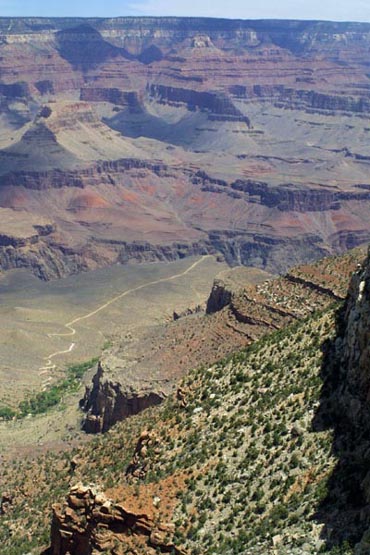
|
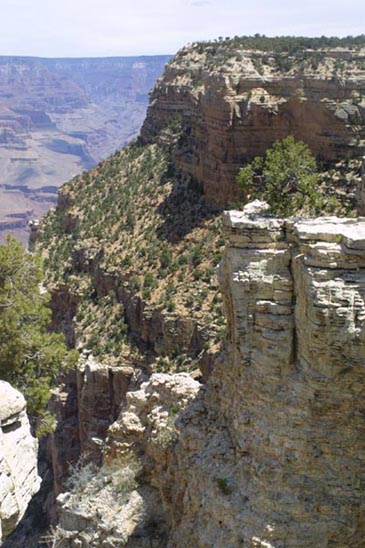
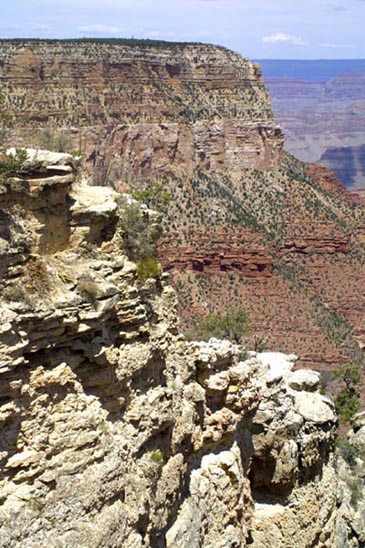
|
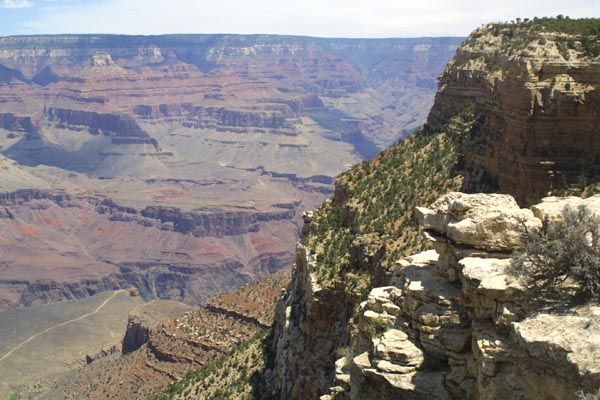
|
The first Europeans who discovered this place, could find no way down,
and went around the canyon, rather than across it. |
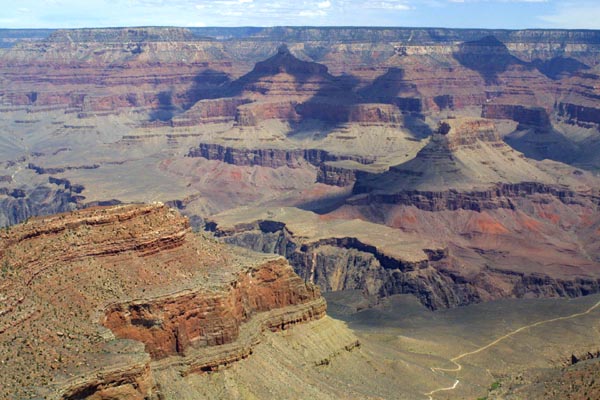
|
A trail (probably Bright Angel) snakes across one of the lower levels
of the canyon. This is not the canyon floor, which is hidden from view in
all but a few places. |
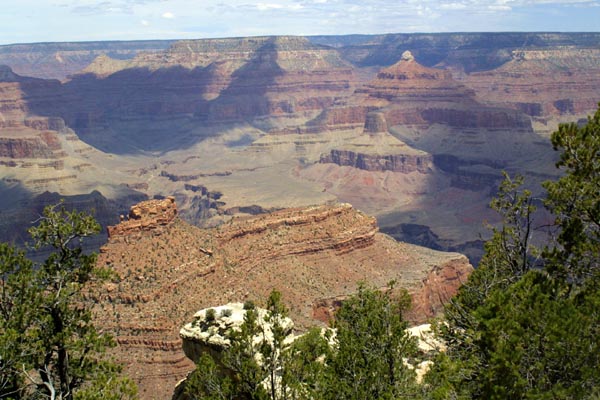
|
The Spaniards who first came across this place were blind to it's
beauty, and considered it only as a major obstacle in their search for gold. |
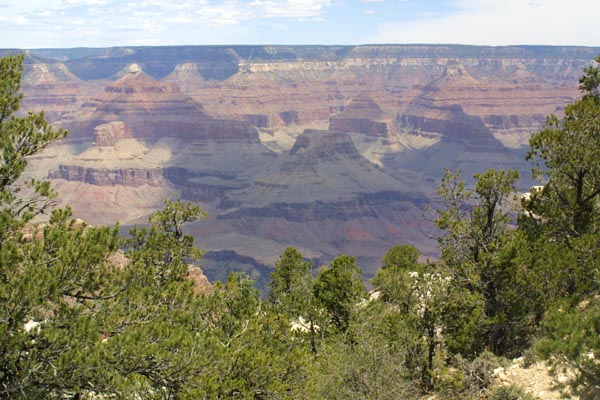
|
Though looking benign enough, when cloaked in a frame of trees, the
lower area of the canyon has temperatures running 10 to 20 degrees warmer
(read hotter), than the rim. Parts are also vulnerable to flash floods,
though normally water is nearly impossible to find outside of the Colorado
River. |
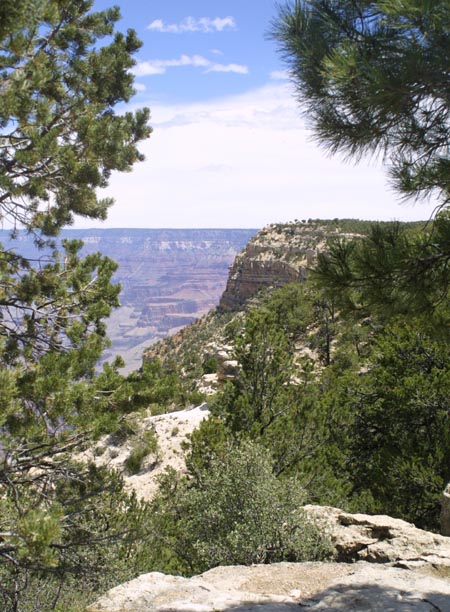
|
A view from the top, looking through a cover of pine trees. The rim,
though not what you would call well watered, is reasonably hospitable. |
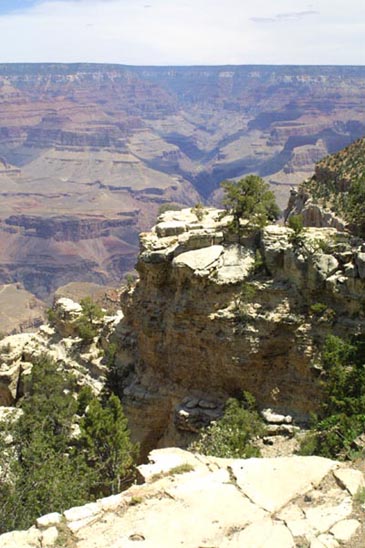
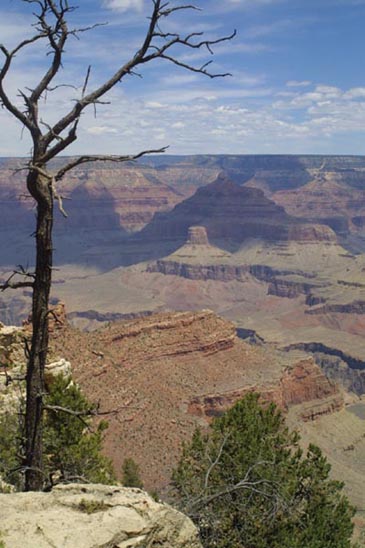
|
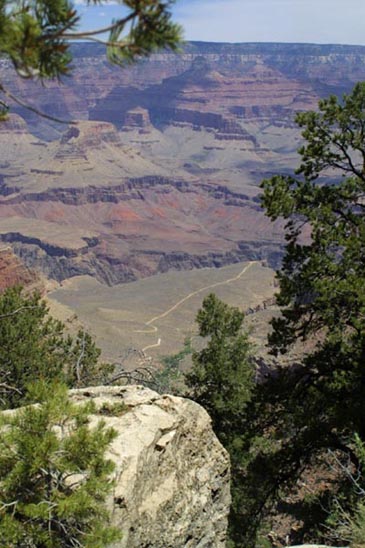
|
Rocks and a few solitary trees stand a lonely vigil above, overseeing
the heat of the mid day. To the left, a boulder is partially shaded by some
trees, along with a bit of the surrounding area. |
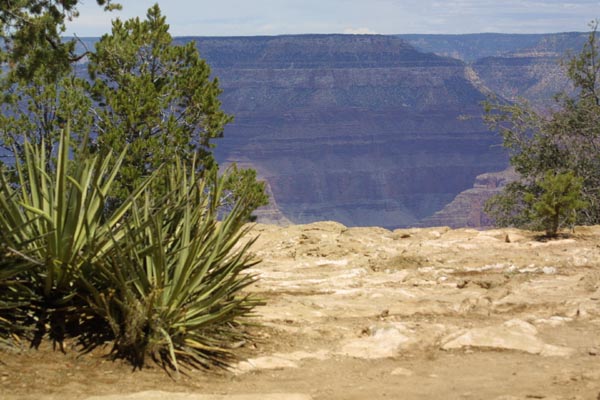
|
An assortment of succulents, bushes, and small trees stand near the
edge. Though no cacti are visible in this photo, they are common throughout
the park. These are all desert plants, very slow growing, and careful about
preserving moisture. |
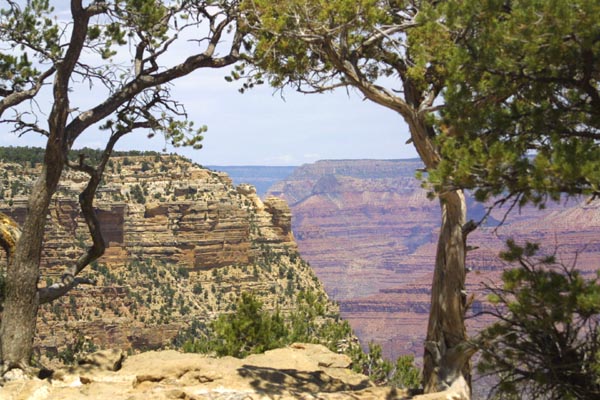
|
An inviting area under the welcome shade of a few gnarled trees. This
is a good spot to enjoy a view of the canyon without being baked by the
sun. |
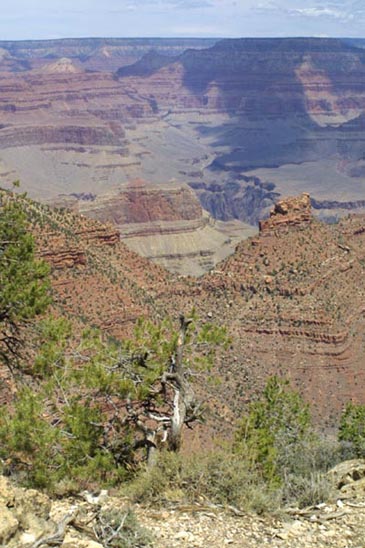
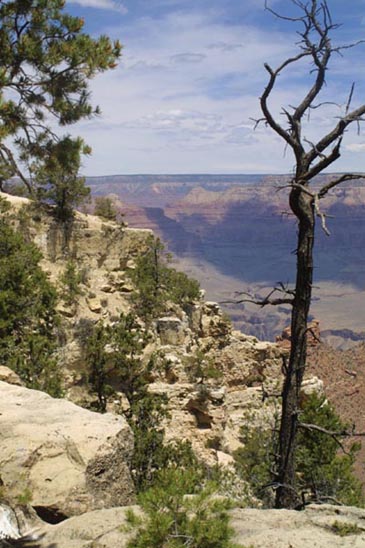
|
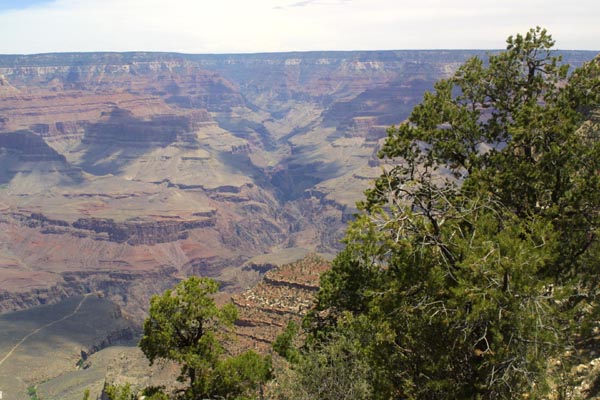
|
Clouds and the motion of the sun, change the look of the canyon constantly.
The north rim, like the true canyon floor, is not visible from all areas
of the park. |
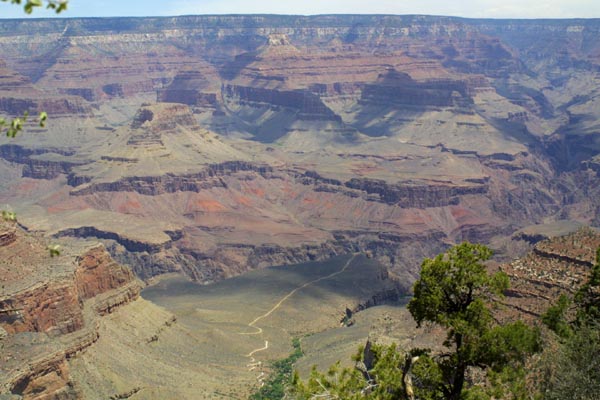
|
The stark openness of the lower areas of the park make for dangerous
traveling during the heat of summer. |
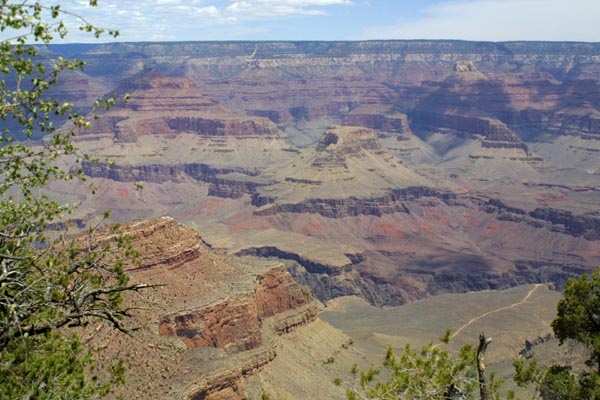
|
A look at the bottom of the world. |
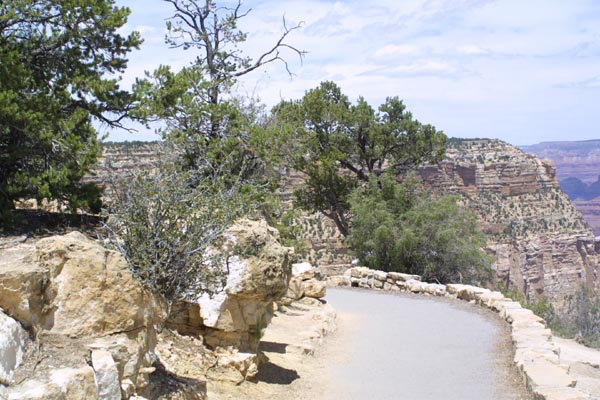
|
Paths skirt the edge of the canyon in many places, often ending in
a shear drop. Several people actually do die here every year, by falling
into the canyon. There are generally also a few suicides each year, and there
have even been a number of murders. |
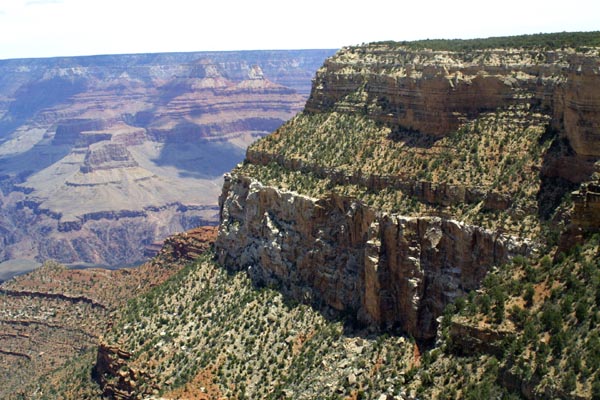
|
Different layers of rock with different compositions wear away at
different rates. This gives the stepped look of many of the canyon walls. |
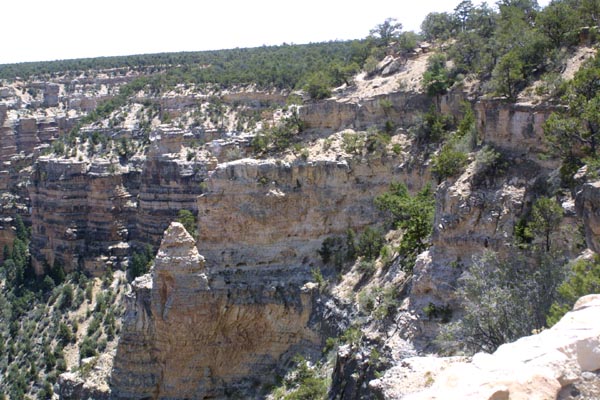
|
A close up view of the eroded surface of a nearby canyon wall. Rock
layering is obvious everywhere you look. |